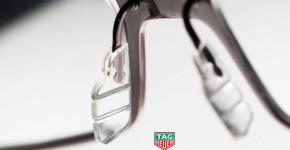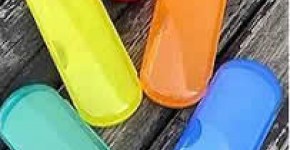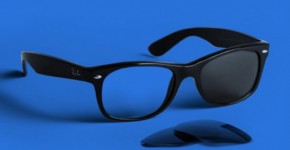Which Sun Lens Should I Choose? Types of Sunglasses Lenses and Usage Areas

Perhaps the most important issue when choosing sunglasses is which eyeglass lens, which lens color or which material we should choose. The purpose of this blog post is to talk about the differences and features of eyeglass lenses; At the same time, we will try to find an answer to which eyeglass lens we prefer according to our intended use.
Glasses that absorb more than 20% of the visible light are called sunglasses. Darkness ratios are 35, 50, 75 or 80 percent.
The lenses used in sunglasses also have different types in terms of the raw materials they are produced, such as mineral, CR-39 Organic plastic, polycarbonate and TAC film.
Now let's take a closer look at the properties of the lenses used in sunglasses and which sunglasses may be more suitable depending on your use.
Mineral (Crystal - Tempered) Glasses
Quality sun glasses are designed to offer the best viewing quality and scratch resistance. There are two of the most prestigious and famous sunglasses brands (Rayban and Persol) that have made mineral sunglasses a specialty. These sun glasses are heavier, cost more, and are more prone to shattering on impact, yet offer the best image quality. A disadvantage of mineral crystal glasses; This is because when broken, glasses can create cuts that can damage your eyes or face. But in terms of image quality, the best clear image is obtained from mineral glasses.
Plastic, Organic Plastic, CR-39 Glasses
CR-39 or organic plastic lenses, being thin and half the weight of mineral glass, are today the most common material for general purpose sunglasses. It meets FDA* requirements for impact resistance, but is not unbreakable, so it is not recommended for active sports. If the glasses you use have a closed frame that completely surrounds the glasses, the most suitable glass to use is CR39 organic glasses. If it is necessary to drill the glass for the stem or middle bridge, cracks and subsequent breakage may occur in organic glasses as a result of stretching. If the glasses need to be drilled, the best glass choice should be polycarbonate glasses.
Polycarbonate (Polycarbon) Glasses
Polycarbonate is a prominent strong plastic material for sunglasses lens. Although it has a light structure, it is the most resistant sun glass against impacts. It can withstand the impact of a steel ball moving at 160km/h. This type of lens is an excellent choice for durable sunglasses. They also offer built-in ultraviolet (UV) filtering. Polycarbonate lenses are a good choice for children's sunglasses, sports, outdoor activities and safety glasses. In rimless sunglasses; In other words, polycarbonate sun glasses should definitely be used in glasses where the glasses stem and middle nose bridge are used by piercing the glass. This will be the best choice to prevent the punctured area from cracking and breaking in the future.
Film Glasses (Nylon or Polyamide / TAC Leaf Glasses)
Nylon or polyamide (known in the optical industry as petal polarizer) is a new premium performance material, combining the advantages of polycarbonate and CR-39 lenses. TAC Film (leaf) sunglasses are extremely light and do not crack when punctured, have excellent shock resistance during conditioning for some frame shapes and are as flexible as possible. It is increasingly used in general purpose glasses and active sports.
SUNGLASS COATINGS
Polarized Coating
Polarized sunglasses have been used by boaters and fishermen for years to reduce glare from the water where they spend so much time. However, over the past few years, the benefits of polarized sunglasses have been realized by motorists and general wearers alike, among other outdoor sports enthusiasts. Thus, the popularity of polarized sunglasses has increased significantly, as has their availability. Activities that benefit the most from polarized sunglasses include water sports, skiing, golf, cycling and jogging. This provides a clearer view for activities and eliminates glare.
Light reflected from surfaces such as a flat road or water is usually horizontally polarized. This horizontally polarized light is blocked by the vertically oriented polarizers in the lenses.
The result is a reduction in glare that can be annoying and sometimes dangerous.
In particular, you can minimize the reflection of vehicle glove boxes on the windshield in sunny weather with polarized glasses.
However, some people find polarized sunglasses annoying because polarization filtering makes some LCD screens unreadable. Also, monitors are often polarized to increase sharpness and contrast, and some cars' screens are also LCD, which can cause them to be unreadable.
Anti-reflective (Anti-reflective - AR) Coating
It consists of various metal oxide layers applied to the front and rear lens surface. Due to the layering effect, AR coatings sometimes give a hint of green or purple depending on the individual manufacturer's process. Each layer is calculated to block reflected light, resulting in a reduction in glare, annoying reflections, and halos around light sources. AR coatings are very useful on water and snow in blocking harmful UV rays.
Mirror Coating
Beyond being highly reflective, it greatly reduces the amount of light reaching your eyes. It is usually applied over dark sunglasses lens, but can also be applied over any basic color. Mirror-coated sun glasses absorb 10% to 60% more light than uncoated glasses. Mirror-coated glasses are best used for high altitudes, sand, water and snow. You can find mirror coated solar glass in many colors today, although silver, gold, and copper metallic coatings are the most common.
In light of all this information, you can ask the following question: Can sunglasses lenses be changed?
-Yes,
You can replace your scratched, broken or deformed sunglass lenses depending on your frame and usage area.
For this, you can place your orders online HERE according to your own glasses color preferences.
FDA: U.S. Government; is the office responsible for biological medical products, radiation emitting instruments, medical devices, cosmetics and veterinary instruments.






